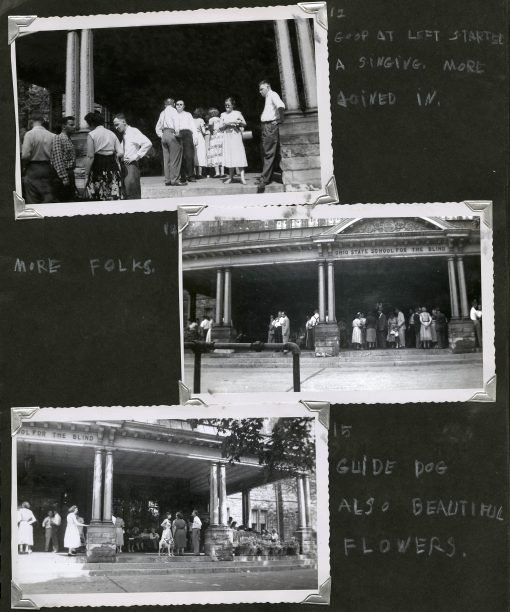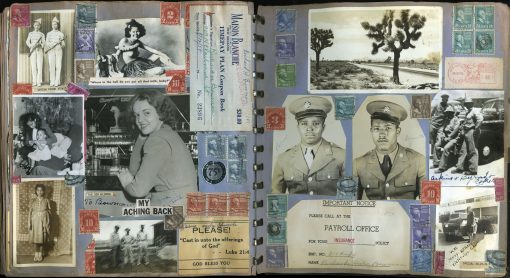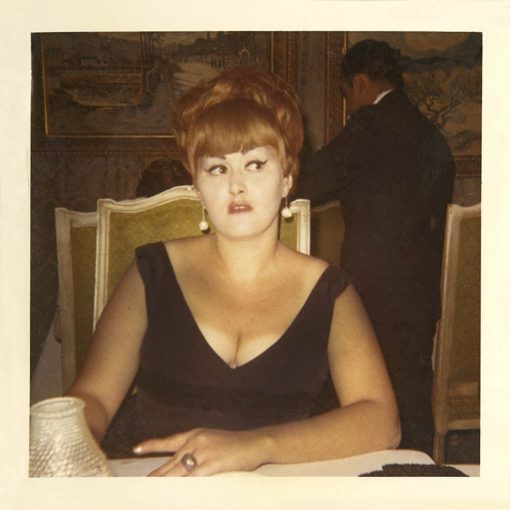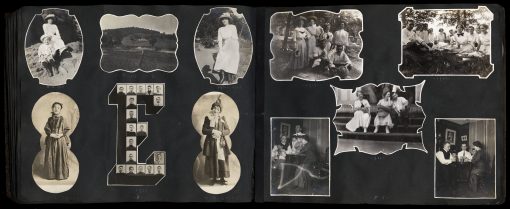Scrapbook Love Story
Memory and the Vernacular Photo Album
9/7/2018 — 1/26/2019

9/7/2018 — 1/26/2019
The Walther Collection presents Scrapbook Love Story: Memory and the Vernacular Photo Album, an exhibition of albums and scrapbooks from the 1890s to the early 1970s. Prevalent yet highly singular, the photo album is perhaps the most familiar format for viewing 20th century photography. From the invention of the handheld Kodak camera in 1888, to the widespread use of digital platforms for photo-sharing and storage, albums have always been a central vehicle for representing and unifying collective memories and social identities. Given their ubiquity and complexity as visual objects, it is surprising how little critical attention such albums have received as historical documents and artistic achievements. Compiled by everyday makers, these distinctive objects record experiences in love, war, friendship, and domestic tranquility.
Arranged loosely chronologically, the exhibition traces the medium's stylistic evolution from highly regimented family portrait albums to scrapbook narratives of increasing spontaneity and artful composition. The selected albums on view are distinguished by the ingenuity and passion with which they were assembled, including surprising and dynamic arrangements of photographs, handwritten notes, and printed ephemera on the page.
For example, one album was diligently compiled by the alumni of the Ohio State School for the Blind during several reunions.
Another contains the obsessive, even perverse experiences of serviceman Richard Hicks Bowman during and after World War II, vividly illustrated with brightly colored stamps and souvenirs; yet another describes a blossoming college romance through a hodgepodge of heartfelt correspondence and memorabilia—a lasting record of one couple's courtship and hopeful future.
These diverse volumes demonstrate two salient characteristics of the modern photo album: a lively engagement between photographers and subjects willing to pose or enact spontaneous performances; and the makers' subsequent creativity in arranging, cutting, and collaging images and texts. This act of compiling signals an innovation in autobiographical storytelling, in which everyday images could be appropriated, reassembled, and concretized into vibrant narratives.
The exhibition aims to reconstitute these powerful photographic objects and memories—no longer exclusively of personal significance—within a larger cultural context. These innovative albums also impart broader cultural value, revealing shared attitudes toward family, gender, race, and nation that range from radical to outmoded. Prefiguring today's all-encompassing digital narratives, these vernacular scrapbooks and photo albums capture a distinctly modernist impulse to document and to archive fragments of our everyday lives.
Scrapbook Love Story is the third exhibition in The Walther Collection's multi-year series of exhibitions focused on the history of vernacular photography—utilitarian imagery made primarily for commercial or personal purposes, rather than aesthetic ones—which considers the social and historical significance of non-fine art photography in a wide range of applications.
Entitled "Imagining Everyday Life: Aspects of Vernacular Photography," the series will include five exhibitions in New York and an international scholarly symposium on October 19 and 20, 2018, organized by Columbia University, Barnard College, and The Walther Collection. It culminates in May 2021 with a comprehensive exhibition organized by Brian Wallis at The Walther Collection in Neu-Ulm, Germany, accompanied by a catalogue co-published with Steidl.
"...the book is not a reader—instead, the volume perfectly summarizes the status quo of an ongoing discussion about professional and amateur, artistic, and vernacular photography."


"This is the myriad realm of 'vernacular photography,' the catchall term for snapshots that amateurs have been taking since 1888, when George Eastman introduced the first hand-held Kodak camera, priced at $25 (about $600 today). Billions of images have been created since then, but only in recent years have amateurs’ contributions begun to be comprehensively assessed as both collectibles and cultural artifacts."










